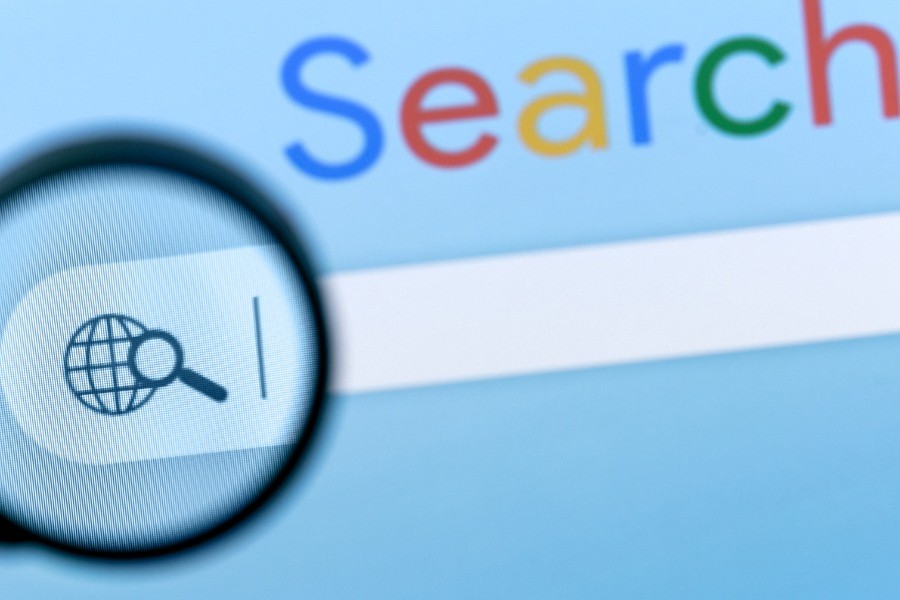- Sending too many emails without a clear strategy overwhelms your audience and leads to lower engagement.
- Personalization, like using first names, company info, or role-specific messaging, makes your emails feel more like a conversation.
- Every email needs a clear and specific call to action (CTA); if your audience doesn’t know what to do next, they probably won’t do anything.
- Avoid spammy formatting and overuse of images or buzzwords, as these can get your emails filtered out before they’re ever seen.
- If your emails don’t provide real, immediate value, your audience won’t stay subscribed for long.
- To build stronger B2B campaigns, define a specific goal, segment your audience, craft a compelling subject line, optimize for mobile, and continuously A/B test for what works.
In the ever-evolving world of digital marketing, an email marketing campaign remains a powerful tool for growing your business.
But while business-to-consumer (B2C) marketers have long embraced personalization and storytelling, many business-to-business (B2B) campaigns are still lagging behind. We often see businesses stay stuck in a cycle of generic subject lines, spammy designs, and inbox overload.
Let’s change that.
This guide will walk you through the most common B2B email marketing campaign mistakes, offer actionable tips, and give you a fresh how-to approach to creating emails that actually get opened, read, and clicked.
B2B email marketing mistakes & how to avoid them
1. Sending too many emails
Some businesses treat their email marketing campaign like a firehose. They bombard their email list with nonstop messages. But quality is far more important than quantity. Overwhelming your audience with too many emails won’t lead to more engagement.
Today, most people are already drowning in emails; don’t become another email for them to ignore, or worse yet – unsubscribe.
How to Avoid: Segment your audience and send emails on a consistent, steady cadence. Weekly might work for a newsletter, but for special offers or announcements, it might be better to send bi-weekly or monthly. It may take time to figure out what works best for your audience, but once you do, stick with it.
2. A lack of personalization
While “dear valued customer” sounds polite, today’s audiences are far more likely to respond to a more personal touch. In fact, without personalization, your email may feel like an automated broadcast. For the best engagement, you want it to feel like a conversation.
How to Avoid: Whenever possible, use first names, company names, and industry-specific references. Better yet, create your email segments based on behavior, job title, or past interactions. This approach may take longer to setup, but it will result in a higher open-rate, more clicks, and thus more ROI.
3. No clear CTA (call to action)
A Call To Action, otherwise known as CTA, is a vital part of every email marketing campaign. CTAs encourage your readers to take a specific action, whether it’s clicking on a link, downloading a digital resource, or buying a product or service. Every email you send to your customers needs to be centered around a specific CTA.
After all, if readers don’t know what they’re supposed to do, they won’t do anything – except possibly unsubscribe. Try to create CTAs that are specific and compelling. Vague CTAs like “click here” or “learn more” aren’t always strong enough to invite action.
Although sometimes these phrases are unavoidable, they should be paired with additional copy that engages the reader and provides a specific incentive, such as “click here to take your marketing to the next level with a free consultation call.”
How to Avoid: Use bold, direct, and clear language: “download the white paper,” “schedule a demo,” or “start your free trial today.” You can also try using strong colors or buttons that help make your CTA jump off the screen.
4. Triggering spam filters
Emails with ALL CAPS, too many exclamation points!!!, or buzzwords and phrases like “100% FREE” often get flagged by spam filters. Add image-heavy design and poor mobile formatting, and you’re cooked.
How to Avoid: Make sure you don’t use spammy words and formatting. Use responsive design. Test your emails across devices. And always use a healthy balance of images and plain text.
5. No real value
But one of the biggest mistakes we see in email marketing campaigns is that they don’t actually serve their audience. When your readers open your emails, what do they gain? How does your email help them solve a problem, or otherwise add value to their lives?
If your campaign is just about your product or service, you’re missing the point – and your audience can tell.
How to Avoid: Write the copy for your emails so that they center the reader’s perspective. When you discuss your brand, or features of your products and services, explain how they help or solve a problem. Provide useful tips, how-to’s, or exclusive offers. In other words, always make sure your email marketing campaign is worth opening.
A fresh framework for B2B email campaigns
So now that you understand what not to do, here’s a step-by-step approach to building email campaigns that connect:
1. Define your goal
What do you want your audience to do? Don’t send emails just to check a box. Make sure each one has a clear purpose. Some possible goals for an email campaign could be:
- Drive sign-ups
- Push registrations to an event or webinar
- Promote downloadable resources
- Nurture leads
2. Segment your audience
As we said earlier, it’s crucial to segment your emails. While your subscribers all have something in common – including an interest in your brand – their needs will be different.
Consider creating B2B email marketing segments that are organized by:
- Industry
- Job role
- Buyer stage
- Past engagement
Once you have your segments, send relevant content to each group that’s custom-tailored to them. After all, personalization goes far beyond a first name.
3. Nail the Subject Line
An email’s subject line is your first impression with recipients. If it’s not clear and compelling, many readers will simply hit “delete.” Your B2B email subject line needs to tell readers exactly what your email is about and why they need to open it.
For example:
- Bad: New solutions for your business
- Better: 3 Tools CFOs Are Using to Cut Costs in 2025
The first email subject line is bland, generic, and even spammy. But the second version offers a solution (cutting costs) and intrigues the reader (which tools?) so they’ll click “open.”
4. Optimize for mobile
It’s estimated that 50-60% of emails are opened on mobile, so you need to make sure your content is:
- Scannable (short paragraphs, bullet points)
- Designed with responsive templates
- Easy to click on with a thumb
5. Deliver value right away
Assume you only have 5 seconds to get attention. Your emails should start with a hook, highlight the value of your message, then get to the CTA.
Experiment with different structures to find what works for your audience. But here’s a simple template to follow that you can use to get started:
- Strong headline
- Brief intro
- Key benefit or insight
- Clear CTA
6. A/B test everything
A/B testing, also known as split testing, is a process that involves sending different versions of the same email to different segments.
You’ll see which email gets more interactions, which you can use to optimize your email marketing campaign. For example, if you discover that emails sent in the morning have a higher open rate, you can change your schedule so that all messages get sent at that same time.
So you might think you know what your audience prefers, but the data from A/B testing will prove it. Some things to consider testing:
- Subject lines
- Send times
- CTA placement
- Button colors vs. linked text
- Types of images and image placement
Do’s & don’ts of B2B email marketing campaigns
Do:
- Keep it short, sweet, and skimmable.
- Use one clear CTA per email.
- Write like a human, not an AI prompted response.
- Include plain-text versions of HTML emails.
- Include your physical address and unsubscribe link.
Don’t:
- Use too many images or image-only emails.
- Rely on stock phrases like “Act now!” or “Limited time only!”
- Send to purchased or cold email lists.
- Use subject lines in all caps.
- Send without testing across platforms (Gmail, Outlook, Apple Mail, etc.).
B2B Email Example
Let’s say you’re in the marketing department of a SaaS company. You’re hosting an upcoming webinar for decision-makers in enterprise IT, and you want to encourage as many people to sign up for your webinar as possible.
Here’s one potential email you could send:
Subject: Don’t Miss Out On Our Amazing Event
Hi,
Join us for a webinar about our software. It has lots of features that can help your business.
[Click here to learn more.]
Sure, this email gets the message across. It’s not unprofessional, and it doesn’t have any spelling or grammar mistakes. But there’s nothing in this bland email that grabs the reader’s attention or entices them to sign up.
Consider this example email instead:
Subject: How Top CIOs Are Solving the Security Puzzle in 2025
Hi Dave,
On June 10, we’re hosting a 30-minute webinar with three Fortune 500 CIO’s. You’ll hear how they’re addressing security threats with smart tech, and what trends to expect next in Q3 and Q4 of this year.
Attendance is limited, so save your spot today.
[Reserve Your Seat]
While this email is still relatively short and punchy, it clearly conveys the value of the event – and includes a strong CTA that encourages sign-ups through urgency and scarcity. It’s also personalized, which builds trust with the reader.
Final thoughts: people first, inbox second
Remember, your B2B email marketing campaign doesn’t have to be cold or impersonal. In fact, the best-performing emails today are the ones that feel like a helpful note from one professional to another. Prioritize clarity over cleverness, insight over intensity, and value over volume.
When in doubt, ask: “Would I want to read this email?” If the answer is yes, you’re on the right track! By crafting stronger B2B emails, you can increase open rates, clicks, and leads.
If you’re ready to take your business to the next level with better email marketing campaigns, contact the team at Redefine Marketing Group today.





